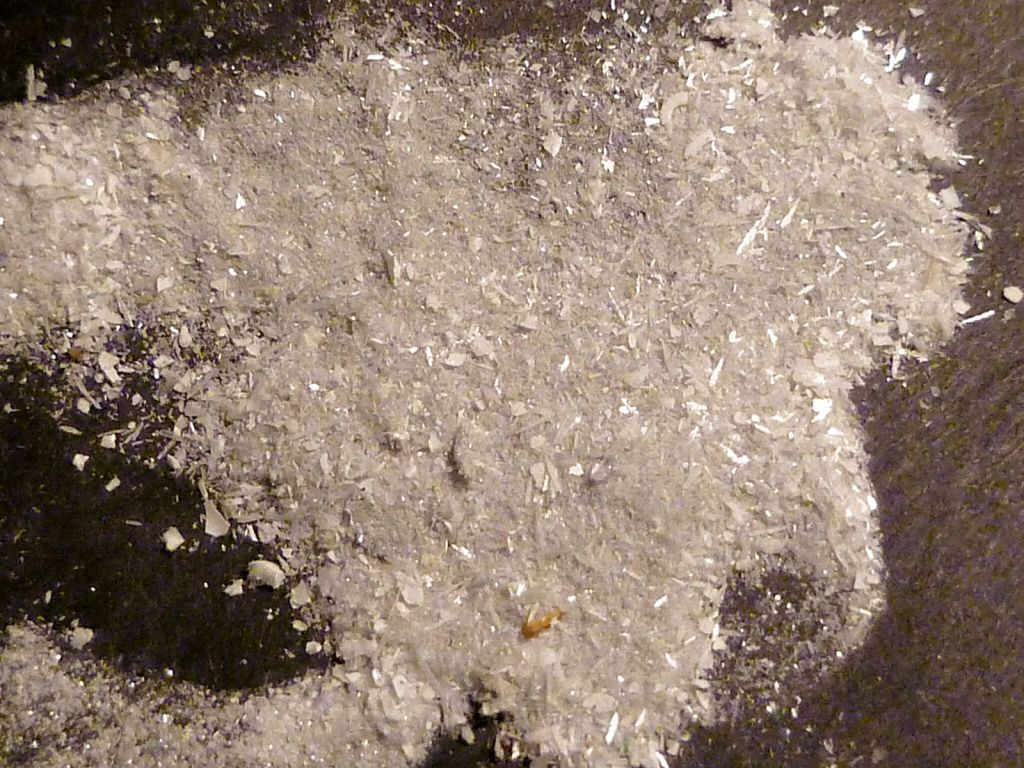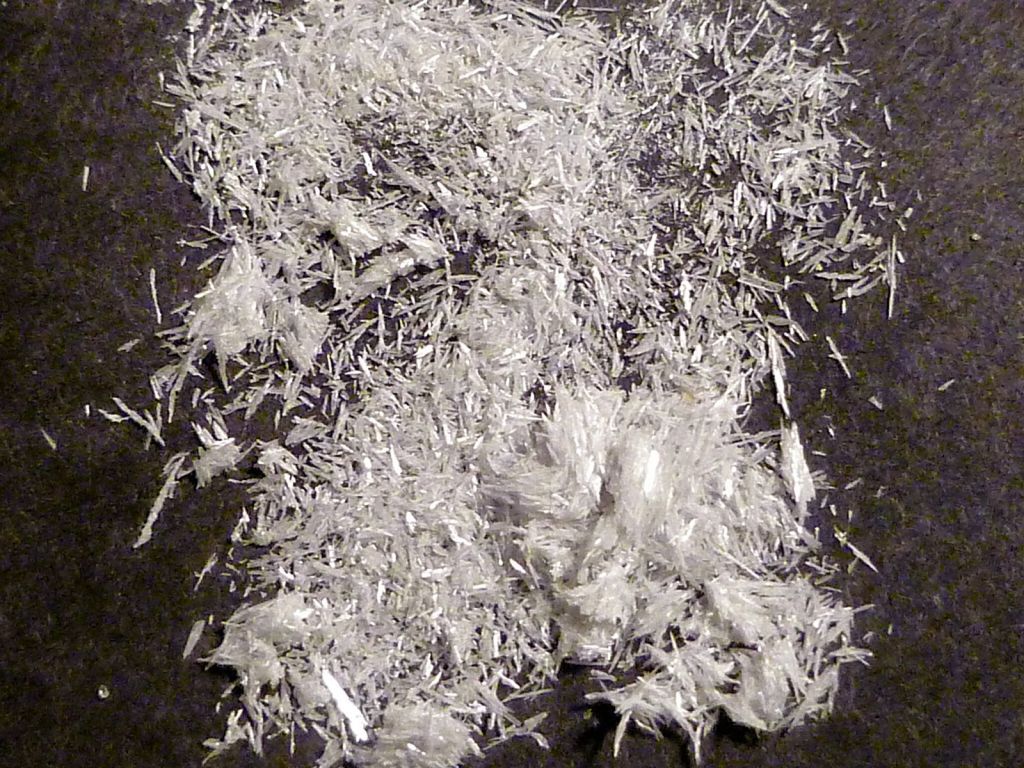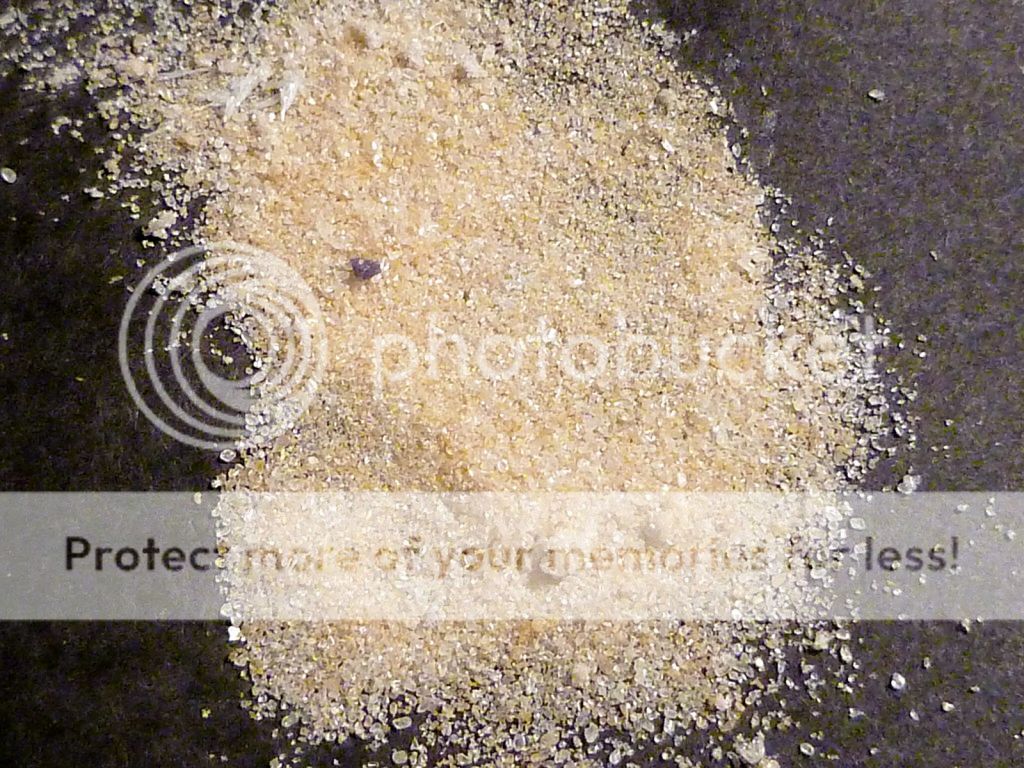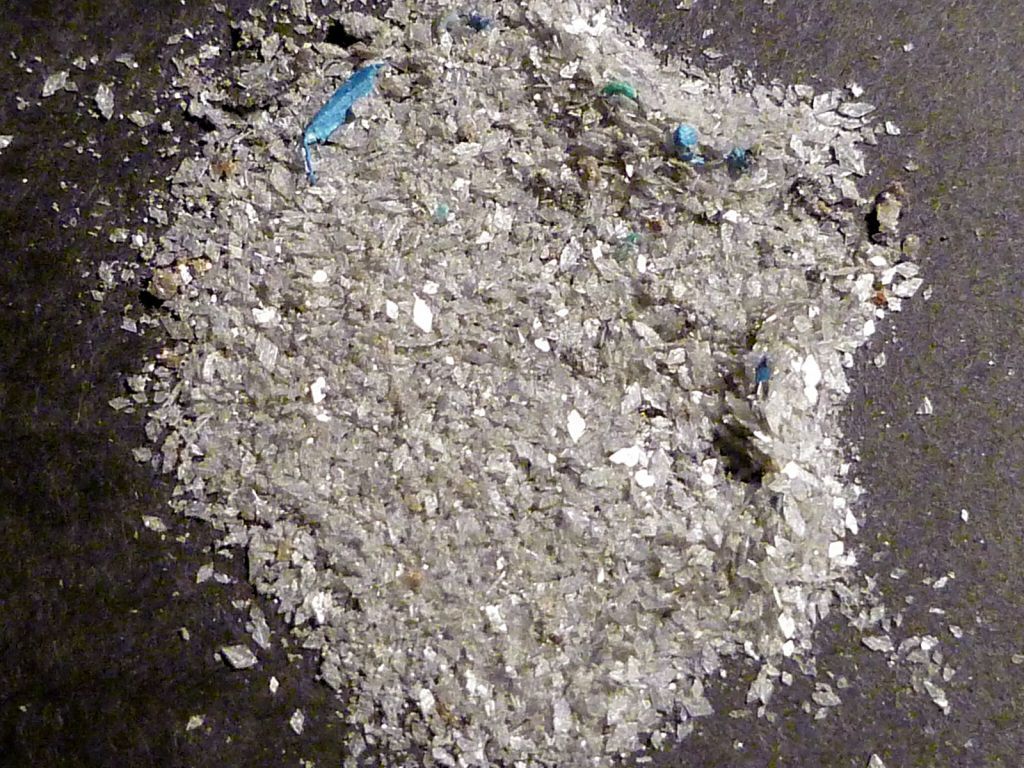maynman1751,
Like I said I cannot tell by looking, but thanks for pictures.
In your earlier post you stated these were chloride salts, how do you know that for sure?
in solutions (even a chloride solution) another salt can precipitate, example we can precipitate a lead sulfate from a chloride solution of gold.
The solubility rules say:
Common chlorides are soluble in water. Except: silver, mercury I, lead (lead II chloride is slightly soluble in boiling hot water. (And as we know Copper I chloride is not very soluble).
Using the instructions I gave you above you should be able to determine these chloride salts below:
CuCl (soluble in HCL)
NaCl (easily soluble in water)
AgCl (insoluble in HCL, or water Hot or Cold),
(But AgCl if not dried will dissolve in ammonium Hydroxide, which when HCl is added re-precipitates).
Drying the salts can make them very difficult to re-dissolve.
PbCl2 (slightly soluble in boiling hot water.
These salts if they are not responding as we discussed here may not be salts of chlorides,
I do not know where they came from in your processes so any attempt for me to guess as to what they are is a waste of my and your time.
They could be most anything potassium sulfates from your homemade nitric acid, sand from ore,
Or any number of common Cations like (chloride, sulfate, sulfide, carbonates, even oxides or hydroxides, phosphates, phosphides, silicates, and so on).
And then we have the anions of metals, which the list can be very long.
Ok if you really need to know more here you will have to try and determine what you have by testing not by looks, knowing when and where these were formed is a big clue to what they can be, but you also have to consider all possible reactions and all chemicals and metals in your reaction that formed the salts, from this we can eliminate some of the possibility's as to what they may be, and concentrate on what we think they may be, if that still does not give us the answer we may even have to test for what we do not think they may be (who knows we may have not guessed all of the chemical reactions our pot of stew was cooking up).
A good place to start is with Solubility Tables, then Qualitive Inorganic Analysis, then also the Flame tests.
Look these up from multiple sources study them, and then use what you learn from them to test these salts, and determine what they are.
Me I usually have a pretty good idea what a salt is when it forms in a reaction, and usually have a way to test for it them to see if it has value as a metal or has value as a chemical I can reuse in some other process,
These may be worthless salts, spending time finding out what they are would be educational and not a total waste of time.
You could also just do some experimenting to just see if they may contain a metal of value and worth trying to recover, taking a small sample and try and dissolve in boiling hot aqua regia, should put most valuable metals in solution working in test tube would work here, these metals can then be tested by methods your learning on the forum, do not forget to also test the insoluble’s from this solution for silver and (also if you wanted to the PGM's insoluble in boiling hot aqua regia, fusion methods are normally used with these).
Sorry John I cannot just look at these salts and tell you what they are, although some of those do look like potassium sulfate to me.
But then again a shinny piece of brass or pyrite can also look like gold, learn not to go by looks or what you think something is. It is always better to test to be sure what it really is if you really do not know for sure.
Hope this helps.









